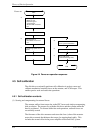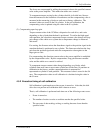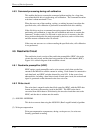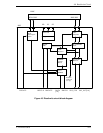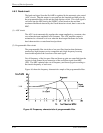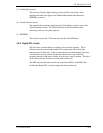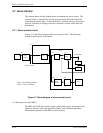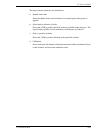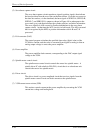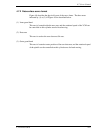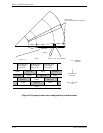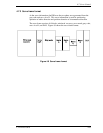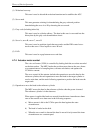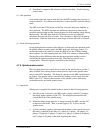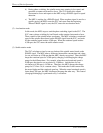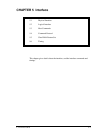
Theory of Device Operation
4-16 C141-E145-02EN
(2) Servo burst capture circuit
The servo burst capture circuit reproduces signals (position signals) that indicate
the head position from the servo data on the data surface. From the servo area on
the data area surface, via the data head, the burst signal of SERVO A, SERVO B,
SERVO C, and SERVO D is output as shown in Figure 4.9 in subsequent to the
servo mark, gray code that indicates the cylinder position, and index information.
The servo signals do A/D-convert by Fourier-demodulator in the servo burst
capture circuit. At that time the AGC circuit is in hold mode. The A/D converted
data is recognized by the MPU as position information with A-B and C-D
processed.
(3) D/A converter (DAC)
The control program calculates the specified data value (digital value) of the
VCM drive current, and the value is converted from digital-to-analog so that an
analog output voltage is sent to the power amplifier.
(4) Power amplifier
The power amplifier feeds currents, corresponding to the DAC output signal
voltage to the VCM.
(5) Spindle motor control circuit
The spindle motor control circuit controls the sensor-less spindle motor. A
spindle driver IC with a built-in PLL(FLL) circuit that is on a hardware unit
controls the sensor-less spindle motor.
(6) Driver circuit
The driver circuit is a power amplitude circuit that receives signals from the
spindle motor control circuit and feeds currents to the spindle motor.
(7) VCM current sense resistor (CSR)
This resistor controls current at the power amplifier by converting the VCM
current into voltage and feeding back.



